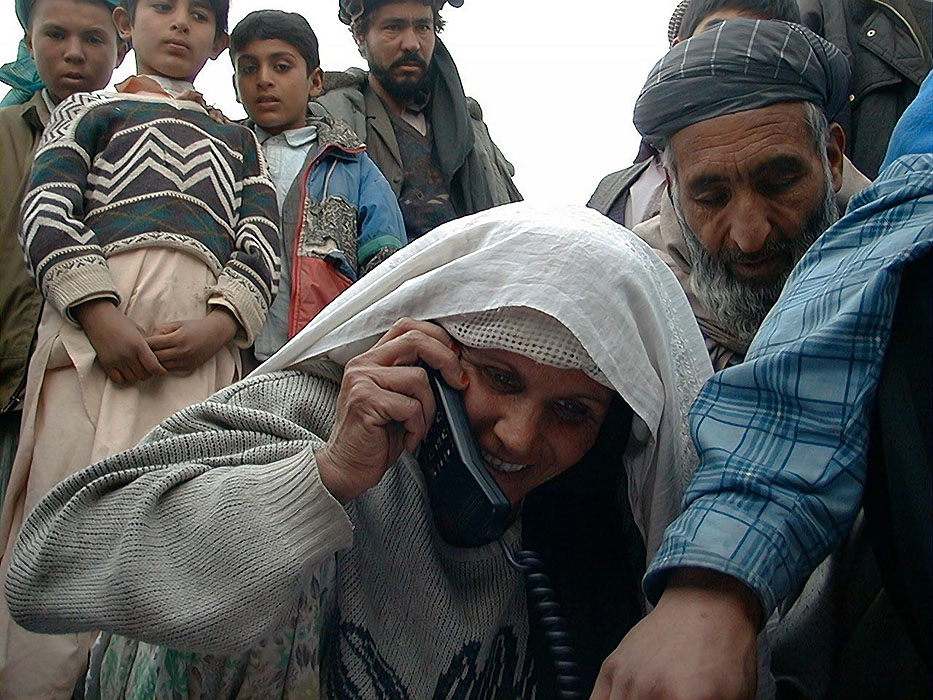War in Afghanistan
Context: Population displacement
Start date: 12/11/2001
End date: 25/02/2002
Areas of intervention: two cities
- Termez, Uzbekistan
- Mazar-i-Sharif, Afghanistan
Activities:
- Support to coordination
- Technical assistance for telecoms assessments
- Humanitarian calling operations
Context
The international intervention in Afghanistan is a direct result of the attacks of September 11, 2001 against the World Trade Centre in New York and the Pentagon in Washington and the 3,000 deaths that the events caused. Since 1996, the Taliban had gained a hold on the country, spreading terror across the territory. At Washington's request, the UN Security Council demanded that the Afghan government "immediately and unconditionally deliver" Bin Laden. The refusal of the Taliban, without appeal, triggered a military response.
The United States called on all countries to join them in a broad coalition against terrorism. Their traditional allies (United Kingdom, Australia) and other countries (Japan) were present, forming a coalition of around twenty countries.
On the night of October 7 to 8, 2001, the first American strikes took place. From the beginning of the conflict the local population bore the full brunt of the fighting. Simultaneously a drought hit the country, condemning the most vulnerable to starvation. Communities received little support from the government, leading to the displacement of populations throughout the country. As entry into the country was prohibited, international NGOs positioned themselves in Afghanistan’s border regions. The telecommunications infrastructure in Afghanistan was significantly underdeveloped at the time, meaning that families became easily separated from their loved ones. As for NGOs, they also expressed the need for Internet in order to facilitate their work.
Deployment
The TSF team set up base in Termez in Uzbekistan on 13th November pending the opening of the border. Efforts focused on the north of the country. This area is renowned for severe droughts, harsh winters, with the largest city, Mazar-i-Sharif housing around 600,000 people. Camps were fast emerging to accommodate the people seeking refuge in this area.
After having carried out its assessments among the humanitarian community, TSF installed Internet via satellite for iNGOs involved in the response. During this period, TSF signed its first agreement with OCHA to define a framework for collaboration once in Afghanistan. Some 28 days later, TSF was able to cross the border with the first humanitarian convoy and set up a telecoms centre in Mazar-i-Sharif.
Support to coordination
The numerous NGOs in the field benefited from the centre, making the most of internet and email facilities to reinforce their coordination efforts and remain in contact with their central offices. With several work stations having been set up for the United Nations, actors we also able to benefit from on-site information sharing, thus accelerating decision-making and the provision of aid.
Technical assistance and telecoms assessments
TSF provided technical assistance and equipment to a number of organisations working in the same zone. Solidarités International, the People In Need Foundation (PINF) and Aide Médicale Internationale (AMI) all benefited from TSF’s support with PINF being able to save several weeks’ time on its assessment programme.
Humanitarian calling operations
At the start of 2002, over 30,000 displaced Afghans were present in the camps set up in and around Mazar-i-Sharif. TSF enabled several hundred people to contact their relatives and loved ones in Pakistan, Iran, Russia and the UAE. Many of the calls were requests for personal help, or in some cases pleas for their family to return home.
The population at the time had been largely isolated from access to technology, but news of operations spread quickly and several families were able to reunite thanks to TSF’s efforts.










